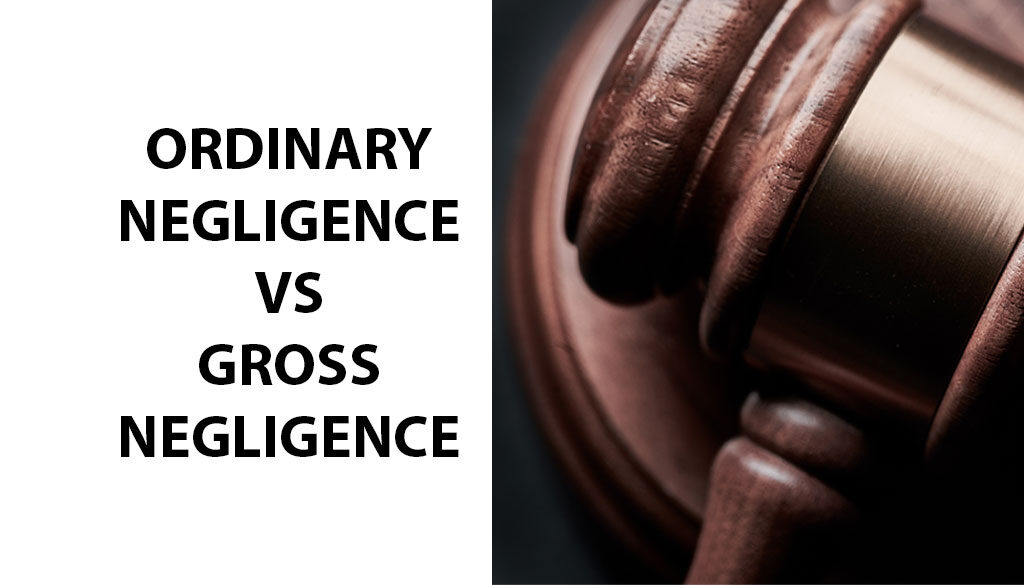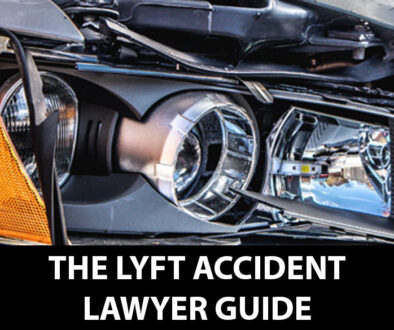The Ordinary Negligence vs Gross Negligence Guide: What’s the Difference?
Whether you’re driving on I-15 or walking in Downtown Salt Lake, the last thing you expect of your day is to be injured in an accident. When someone else’s careless mistake leads to you being injured, the concept of ordinary negligence comes into play.
At Harris, Preston, & Chambers, we’ve seen countless cases where individuals have suffered injuries because of someone else’s negligence. While the word “negligence” may conjure images of reckless behavior, it’s important to understand that ordinary negligence isn’t almost about someone acting with complete disregard for safety. In fact, ordinary negligence is often rooted in the ordinary actions of everyday people.
So what’s the difference between ordinary negligence vs gross negligence in Utah? Let’s take a look at what these terms mean and how that might affect your personal injury case.
We’re based in Logan, UT, and serve the entire state including Salt Lake City, Ogden, and St. George. Click the button below or call us at (435) 752-3551 to get a free consultation.
What is Negligence in Utah?
Negligence, as defined in the Utah Code, is “the failure to exercise that degree of care that an ordinarily reasonable and prudent person exercises under like or similar circumstances.” In essence, when someone’s carelessness results in harm or damage, they may be deemed negligent in the eyes of the law. This concept is at the heart of most personal injury cases. If negligence can be proven, the injured party may be able to receive compensation for their losses.
In order to prove negligence in a personal injury case, there are several elements that must be established.
- That the defendant owed the plaintiff a duty of care.
- That the defendant breached that duty.
- That this failure, and not something else, resulted in the plaintiff’s injuries.
- And finally, that the plaintiff was actually hurt.
The state of Utah also has a law called “Comparative Negligence.” If you share fault in the accident, the amount of money you’re eligible to be compensated will be lessened by the percentage of fault you share. For example, if you’re found to be 20% at fault, your compensation would be 80%. If you’re more than 49% at fault, you are ineligible for any sort of compensation.
What is Gross Negligence?
Now that you understand more about negligence, let’s compare ordinary negligence vs gross negligence in Utah. Where ordinary negligence could be a minor lapse in judgment, gross negligence is typically much more reckless, extreme, and even intentional behavior that causes harm.
Key characteristics of gross negligence include:
- Conscious indifference: The person knowingly and recklessly ignores the risks and potential harm associated with their actions.
- Severe deviation from standard of care: The defendant deviated substantially from the level of care that an ordinarily reasonable and prudent person would exercise under similar circumstances. This departure is much more pronounced than in the case of ordinary negligence.
- High likelihood of harm: Gross negligence often involves situations where there is a high probability of causing significant harm or damage to others. It’s not just a minor lapse of judgment.
- Potential criminal liability: In some cases, gross negligence might cross into criminal territory, leading to criminal charges.
Some examples of gross negligence might include drunk driving that causes a fatal accident, extreme medical malpractice, or grossly negligent behavior in a workplace that endangers employees’ lives.
Negligence vs Medical Malpractice
In the healthcare industry, medical negligence is when a healthcare provider, such as a doctor or nurse, fails to meet their duty of care. This might be an error or mistake. Medical malpractice, however, occurs when negligence causes injury or harm. In medical malpractice cases, the standard of care is determined by what a similarly trained and qualified healthcare professional would do.
Some examples of medical malpractice include:
- A misdiagnosis or delayed diagnosis: For example, if a healthcare provider fails to diagnose breast cancer when a similarly trained doctor would have been able to make the diagnosis.
- Surgical errors: This might include operating on the wrong site, amputating the wrong limb, or leaving surgical instruments inside the patient.
- Medication errors: Prescribing the wrong dose, wrong medication, or a medication the patient is allergic to can all be forms of medical malpractice.
- Failure to obtain informed consent: Healthcare providers are required to obtain informed consent from their patient before performing a procedure or treatment. However, if the provider doesn’t fully explain risks, benefits, and alternatives, this can lead to medical malpractice.
Damages for Negligence Claims
If you’ve been injured by someone’s negligence, you might receive damages from the responsible party as a way to make up for your losses. There are a few different types of damages that your lawyer might help you pursue in a negligence claim:
- Economic damages: Economic damages are any sort of financial loss that can be quantified. This might include your medical expenses, lost wages, and property damages.
- Non-economic damages: Non-economic damages, on the other hand, are for losses that are impossible to quantify. They might include pain and suffering, emotional distress, and loss of consortium.
- Punitive damages: Punitive damages are not to compensate you for your losses, but rather for the defendant to be punished for their wrongs. Punitive damages are only awarded in cases of gross negligence or intentional misconduct.
When Should You File a Claim?
If you’ve been injured due to someone else’s negligence, you may be wondering when you should file a claim. The timing for filing a legal claim is crucial. Every type of legal claim is subject to a statute of limitations, which is essentially a deadline you need to file your claim by. In the state of Utah, the statute of limitations is four years for personal injury claims and two years for both wrongful death and medical malpractice.
Whether or not you decide to file a claim, it’s always a good idea to talk with an experienced personal injury attorney like Harris, Preston, & Chambers as soon as possible. We understand the intricacies of Utah law and can help you file your claim at the right time. We’ll investigate your case, keep track of medical documents and bills, and help you keep track of crucial evidence for your case. Building a case can take time, especially when it’s complex, so it’s always best to speak with us as soon as you can.
Types of Injury Cases Negligence Applies to
Ordinary negligence applies to a variety of injury cases. Here are some examples of different types of personal injury cases involving negligence:
- Car accident: The driver was texting while driving, which led to his collision with a pedestrian.
- Slip-and-fall: The owner of a restaurant didn’t fix a handrail that had fallen off, which led to a customer falling down a set of stairs.
- Medical malpractice: The surgeon left a piece of gauze inside the patient after surgery, which caused pain and other symptoms.
- Dog bite accident: The owner of a dog failed to properly restrain their dog, which led to someone being bitten.
These are just some of the many types of injury cases negligence applies to. If you’ve been injured due to someone else’s negligence, whether it’s ordinary negligence or gross negligence, you may be entitled to compensation. At Harris, Preston, & Chambers, we know how stressful it can be trying to deal with new injuries while also seeking compensation for your losses. Let us take on the burden of your case so you can focus on healing.
*Nothing herein constitutes legal advice. You should obtain independent legal counsel regarding your specific factual situation.




